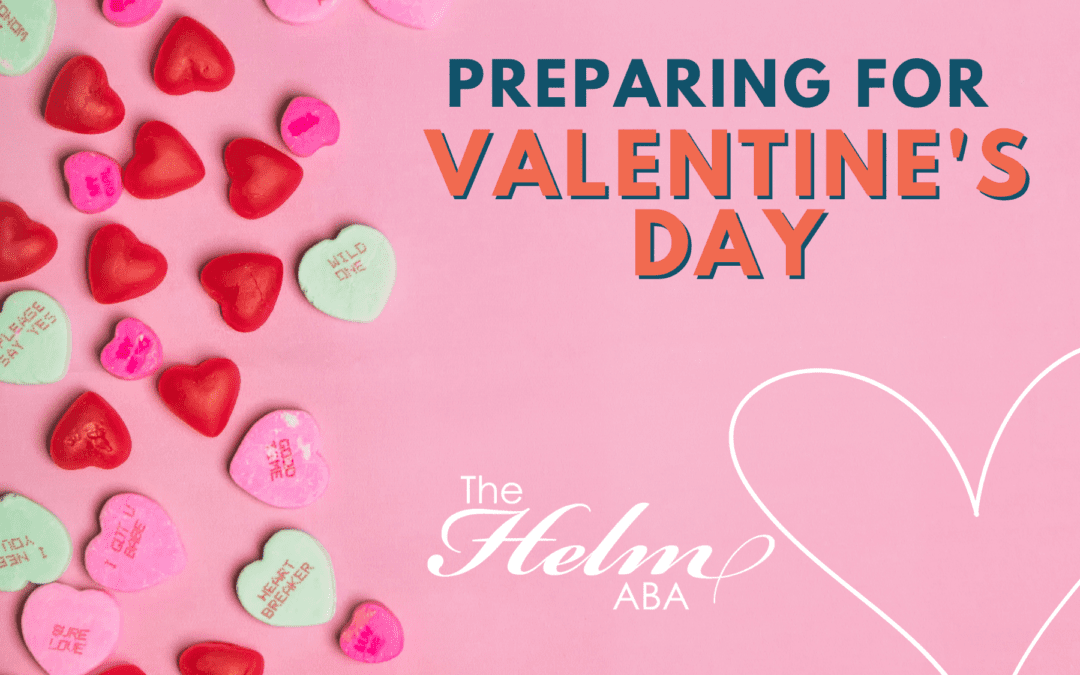Valentine’s Day is almost here! A lot of kids can’t wait for Valentine’s card exchanges, class parties, and maybe even finding out who their crush is. While it may be exciting for most, for a lot of kiddos on the autism spectrum, Valentine’s can be an especially challenging holiday.
Valentine’s Day is a holiday driven by social interaction, metaphorical and non-literal language, and expressing emotions. A child with autism is likely to struggle with one or maybe even all of these things. So let’s talk about some steps you can take to help your child prepare for the holiday.
First and foremost, if your kiddo is in school, it will be very helpful to find out what the teacher is planning for Valentine’s Day. You can control what happens at home, but without knowing what will happen at school, it’s pretty difficult to prepare. So send your teacher a short email asking what the plan is and explain that you want to help your child prepare for the activities.
Try to get details if you can (knowing that sometimes a lesson plan has to change) so you can get ahead of any potential problems. For example, find out what time the card exchange will take place so you can make sure to let your kiddo know. Knowing it’s after lunch or at the end of the day can really help with the anxiety of awaiting the activity.
Practice the Social Interaction
If you read our blog regularly, you know we love a good practice session…or ten. So have the family create some cards and decorate some old tissue boxes to collect them. Then set up your card exchange. Talk through what it will look like, what your child can say when giving and/or receiving a Valentine, and practice!
Interactions to think about
- Receiving a Valentine’s card with a joke or character they love
- Getting a Valentine’s card with a joke or character they don’t like or don’t understand
- Receiving a Valentine from someone they really like
- Getting a Valentine from someone they don’t like
- Not receiving a valentine from someone
- Seeing someone else receive a different valentine (bigger, better, more candy, etc.) than they got
- Giving a valentine to someone they like
- Giving a valentine to someone they don’t like
For each of these scenarios, come up with some things your kiddo can say and practice, practice, practice!
Most of the time, rules are set up in these kinds of activities to try to ensure equity, but kids are kids, and that doesn’t always happen. It’s good to prepare for scenarios like someone else getting a huge valentine and your kiddo only getting a card (or vice versa) just in case.
Talking about language
Be Mine. Love U. Txt Me. Miss You. Me + You. Adore Me. Crazy 4U.
All of these are real phrases that can be found on those candy hearts people love to give out on Valentine’s Day. Super cute, sure, but for a literal thinker, these kinds of things can be confusing, or worse, misleading.
It is always helpful to have a conversation with your kiddo, so we suggest starting there. You can talk about how every holiday has its own set of phrases (Halloween – “Trick or Treat,” Christmas – “All I want for Christmas is you,” etc.), and Valentine’s is no different. These are just things people say on the holiday to celebrate. Understanding that these phrases aren’t real requests or admissions, just fun phrases to celebrate, can help prevent some misunderstanding.
It may also be helpful to come up with a planned response for some of these phrases. For example, if someone says “Be my Valentine!” we don’t want a “No!” to be our response. So practice a “Happy Valentine’s Day!” response so no one gets their feelings hurt.
Expressing Emotions
This is probably the trickiest part of the holiday, not just for people on the autism spectrum, but for everyone! Where is the line between really wanting to show love to someone and the kindness we should express to everyone on the holiday?
We obviously want our kids to express their emotions, and if you have an older kiddo who has a real crush, it can be hard to navigate the expectations of the holiday. Our general advice would be to approach the holiday as an opportunity to show kindness rather than love. That way there will be less chance of a misunderstanding.
Navigating a holiday like Valentine’s is no easy feat, and because every child is different, there is no one size fits all answer. If you have concerns, the best thing to do is talk to your kiddo! If you need more help or advice, The Helm is here so please don’t hesitate to reach out!
For more information on helping children with autism form friendships, click on this video!


